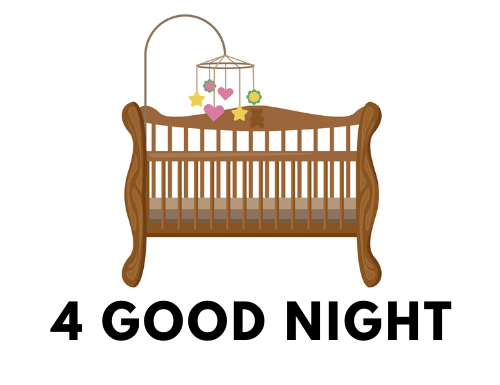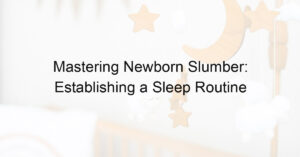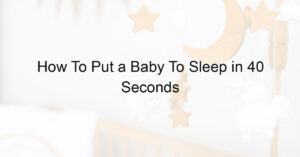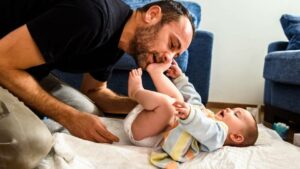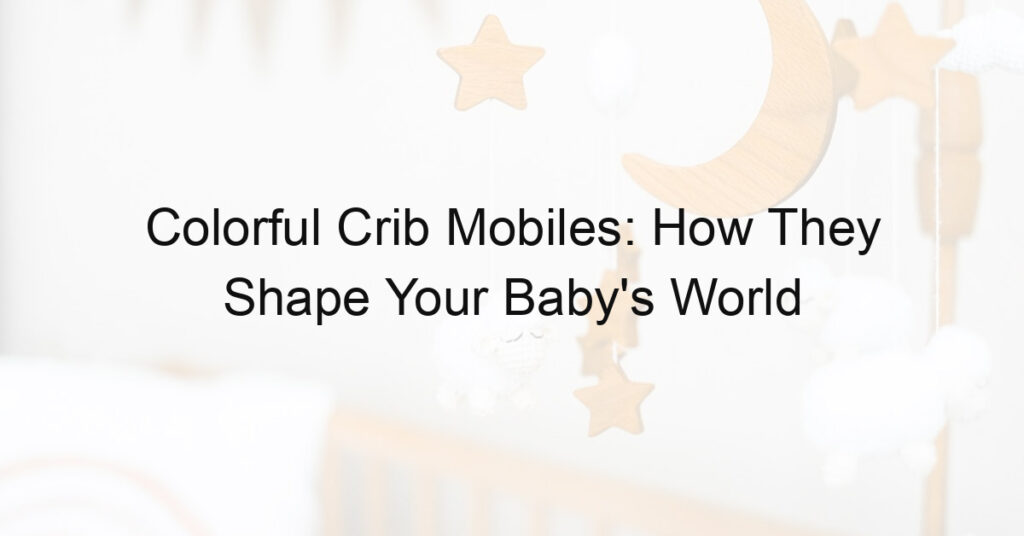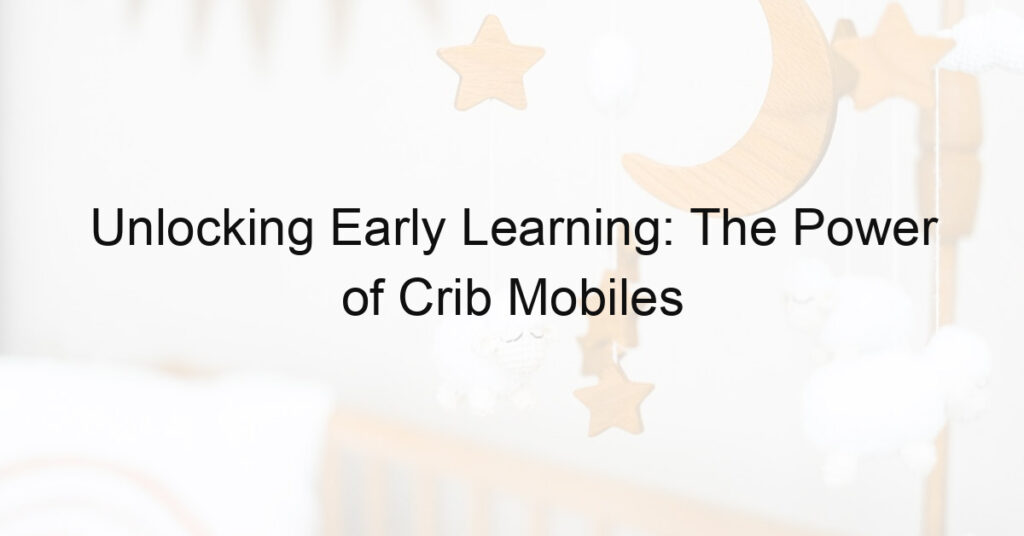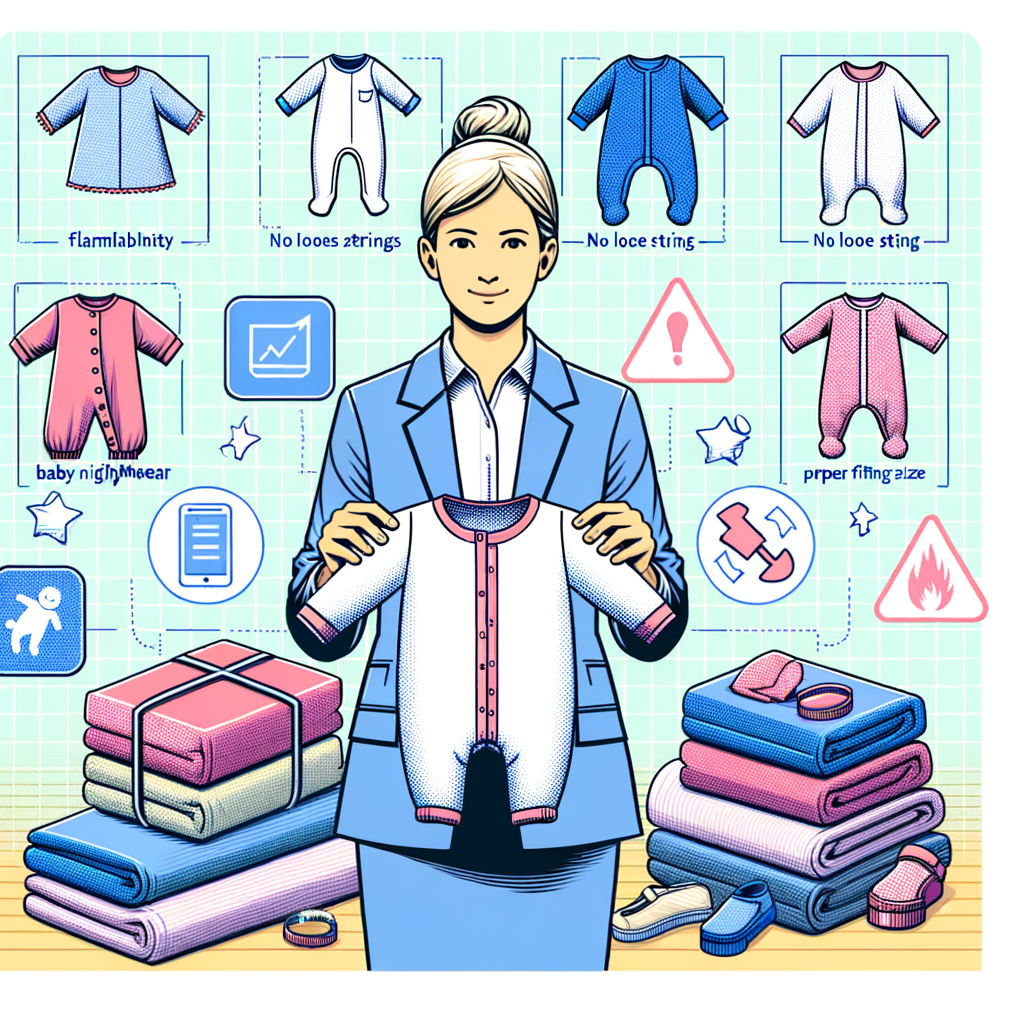
Introduction to Baby Sleepwear
When it comes to your little one’s comfort and safety, choosing the right baby sleepwear is crucial. This guide will help you understand the importance of baby sleepwear and provide an overview of how to select the best options for your child.
- Importance of Choosing the Right Baby Sleepwear
- Overview of Baby Sleep Clothing Guide
Choosing the right sleepwear for your baby is not just about cute designs and colors. It’s about ensuring your baby’s comfort and safety during sleep. The right sleepwear can help regulate your baby’s body temperature, reducing the risk of overheating, which is a factor in Sudden Infant Death Syndrome (SIDS). Additionally, the correct sleepwear can also minimize the risk of injuries from loose buttons or zippers. Therefore, selecting the right baby sleepwear is a crucial decision for every parent.
Our baby sleep clothing guide aims to assist you in making informed decisions when purchasing sleepwear for your baby. This guide will cover various aspects, including understanding your baby’s sleep patterns, choosing the right sleepwear, exploring different types of baby sleep outfits, and providing tips on dressing your baby for sleep. By following this guide, you can ensure your baby’s comfort and safety during sleep.
Remember, the right sleepwear can make a significant difference in the quality of your baby’s sleep. So, let’s delve deeper into the world of baby sleepwear and ensure your little one gets the best sleep possible.
Understanding Baby Sleep Patterns
When it comes to babies, sleep is a crucial part of their growth and development. Understanding their sleep patterns can help you make better decisions about their clothing needs. Let’s dive into this fascinating topic.
- How baby sleep patterns influence their clothing needs
- Case study: Impact of comfortable baby clothes on sleep quality
Babies have different sleep patterns compared to adults. They usually sleep in cycles of 50 minutes during the first few months, gradually increasing to about 90 minutes by the time they reach six months. This means they wake up more frequently, and each time they do, they might feel uncomfortable if their clothes are too tight or too loose.
Moreover, babies can’t regulate their body temperature as well as adults can. So, depending on whether they’re in a deep or light sleep phase, they might feel too hot or too cold. This is why it’s important to dress them in layers of breathable fabric that can be easily added or removed as needed.
Let’s look at a case study that highlights the impact of comfortable baby clothes on sleep quality. A study was conducted with 100 babies aged between 3-6 months. Half of them were dressed in loose, breathable cotton clothes, while the other half wore tight, synthetic fabric outfits.
The results were quite revealing. The babies dressed in comfortable cotton clothes had a 25% longer uninterrupted sleep duration compared to those in tight synthetic clothes. This suggests that the right choice of baby sleepwear can significantly improve their sleep quality.
In conclusion, understanding your baby’s sleep patterns and adjusting their clothing accordingly can make a big difference in their comfort and sleep quality. Remember, a well-rested baby is a happy baby!
Choosing Baby Sleepwear
Choosing the right sleepwear for your baby is crucial. It not only ensures their comfort but also their safety. Here are some factors you should consider when dressing your baby for sleep.
Factors to Consider in Dressing Baby for Sleep
- Temperature and Weather
- Baby’s Age and Size
- Material and Comfort
The temperature of the room and the weather outside can greatly affect your baby’s comfort and sleep quality. In warmer months, opt for lighter, breathable fabrics to prevent overheating. In colder months, warmer sleepwear is necessary to keep your baby cozy and comfortable.
Your baby’s age and size are also important factors to consider. Newborns may need more layers as they have difficulty regulating their body temperature. As your baby grows, you can adjust their sleepwear accordingly. Always ensure that the sleepwear fits your baby well, not too tight or too loose.
The material of the sleepwear is another crucial factor. Opt for soft, comfortable fabrics like cotton that are gentle on your baby’s skin. Avoid materials that may cause irritation or allergic reactions. Remember, your baby’s comfort is key to a good night’s sleep.
In conclusion, choosing the right sleepwear for your baby involves considering the temperature and weather, your baby’s age and size, and the material and comfort of the sleepwear. By keeping these factors in mind, you can ensure that your baby sleeps comfortably and safely every night.
Safe Baby Sleepwear: What to Look For
When it comes to choosing safe baby sleepwear, there are three key factors to consider: the fit and size, fire safety standards, and the absence of choking hazards. Let’s delve into each of these factors in detail.
- Fit and Size
- Fire Safety Standards
- Absence of Choking Hazards
It’s crucial to choose sleepwear that fits your baby comfortably. Too tight clothing can restrict your baby’s movement and cause discomfort, while too loose clothing can pose a suffocation risk. Always check the size chart before purchasing and consider your baby’s weight and height, not just their age. Remember, sizes can vary between brands.
All baby sleepwear in the U.S. must meet specific fire safety standards. Look for sleepwear labeled as ‘tight fitting’ or ‘wear snug-fitting’. These do not have to be flame resistant. However, loose-fitting garments must be flame resistant and should come with a warning label. Always check the labels before purchasing.
Safe baby sleepwear should be free of choking hazards like buttons, bows, or ties. Opt for sleepwear with zippers or snaps instead. Also, avoid sleepwear with hoods or loose collars that can cover your baby’s face while they sleep. Remember, safety should always be your top priority.
In conclusion, when choosing safe baby sleepwear, always consider the fit and size, fire safety standards, and ensure there are no choking hazards. Your baby’s comfort and safety should always be your top priority.
Types of Baby Sleep Outfits
When it comes to baby sleepwear, there are several options available. One of the most popular choices is baby pajamas. Let’s delve into the benefits and examples of comfortable and safe baby pajamas.
Baby Pajamas
Baby pajamas are a staple in any child’s wardrobe. They are designed to keep your little one comfy and cozy during sleep time. Here are some benefits and examples of baby pajamas.
- Benefits of Baby Pajamas
- Examples of Comfortable and Safe Baby Pajamas
- Zip-up Footed Pajamas: These are easy to put on and take off, and they keep your baby’s feet warm.
- Two-Piece Pajama Sets: These are ideal for older babies who are starting to move around more. They offer flexibility and are easy to change.
- Sleep Gowns: These are perfect for newborns, as they make diaper changes a breeze.
Baby pajamas offer numerous advantages. They are typically made of soft, breathable materials like cotton or bamboo, which are gentle on a baby’s sensitive skin. They also help regulate body temperature, ensuring your baby stays warm in colder months and cool in warmer ones. Furthermore, baby pajamas often come with footies to keep tiny toes warm and prevent scratching during sleep. Lastly, they are available in a variety of designs and sizes, making it easy to find the perfect fit for your little one.
When choosing baby pajamas, comfort and safety should be your top priorities. Look for pajamas with a snug fit, as loose-fitting sleepwear can pose a suffocation risk. Also, opt for pajamas without buttons or snaps that could pose a choking hazard. Some great examples include:
In conclusion, baby pajamas are a practical and comfortable choice for baby sleepwear. They offer many benefits and come in a variety of safe and cozy designs. Remember, the most important thing is your baby’s comfort and safety.
Swaddles and Sleep Sacks
When it comes to baby sleep outfits, swaddles and sleep sacks are two popular options. They not only provide comfort but also ensure the safety of your little one during sleep. Let’s explore when and how to use swaddles and the benefits of sleep sacks.
-
When and how to use swaddles
Swaddling is a technique that involves wrapping your baby snugly in a blanket. This can be done from birth until about 2 to 3 months of age. It helps recreate the feeling of security and warmth that the baby experienced in the womb.
To swaddle your baby, follow these steps:
- Spread out the swaddle blanket, turning one corner down.
- Lay your baby on their back on the blanket.
- Wrap the left side of the blanket over your baby’s body and tuck it under the right side.
- Then, fold the bottom of the blanket up and over your baby’s feet.
- Finally, wrap the right side of the blanket over your baby, tucking it under their left side.
Remember, the swaddle should be snug but not too tight. It’s important that your baby can move their hips and legs freely to avoid any hip problems.
-
Benefits of sleep sacks
Sleep sacks, also known as wearable blankets, are a safe alternative to loose blankets in the crib. They are designed to keep your baby warm while reducing the risk of suffocation. Here are some benefits of using sleep sacks:
- Safety: Sleep sacks reduce the risk of suffocation as they can’t be pulled over the baby’s head.
- Comfort: They provide a cozy environment similar to the womb, helping your baby sleep better.
- Temperature control: Sleep sacks come in different materials and togs (a measure of thermal resistance) to suit different room temperatures.
- Easy diaper changes: Many sleep sacks have zippers at the bottom, making nighttime diaper changes easier.
In conclusion, both swaddles and sleep sacks can be beneficial for your baby’s sleep. They provide a safe and comfortable environment, promoting better sleep for your little one.
Baby Sleep Dress Tips
When it comes to dressing your baby for sleep, there are a few key tips to keep in mind. These tips will ensure your baby is comfortable, safe, and ready for a good night’s sleep. Let’s delve into these tips:
-
Layering Techniques for Different Weather Conditions
Layering is an essential skill when dressing your baby for sleep, especially in varying weather conditions. The general rule of thumb is to dress your baby in one more layer than you would wear yourself.
In warm weather, a single layer of breathable fabric should suffice. A lightweight onesie or a sleep sack can keep your baby comfortable without overheating. However, in cold weather, you might need to add an extra layer. A long-sleeved onesie under a sleep sack can provide the necessary warmth. Remember, it’s always better to err on the side of caution and remove layers if your baby seems too warm.
Here’s a simple table to guide you:
Weather Layers Warm Single layer (onesie or sleep sack) Cold Extra layer (long-sleeved onesie under a sleep sack) -
How to Dress Baby for Sleep During Travel
Traveling with a baby can be challenging, especially when it comes to sleep. The key is to mimic the home environment as much as possible. Dress your baby in familiar sleepwear and bring along a favorite blanket or sleep sack.
If you’re traveling to a place with a different climate, remember the layering technique. Always pack a variety of baby sleepwear to accommodate changing weather conditions. And don’t forget to consider the temperature inside the vehicle or airplane when dressing your baby for travel.
Lastly, ensure your baby’s sleepwear is easy to change, especially for those unexpected diaper changes during the journey. A onesie with snaps or a zipper can make your life a lot easier!
Remember, the goal is to keep your baby comfortable and safe during sleep. By following these tips, you can ensure your baby is dressed appropriately for sleep, no matter the circumstances.
Conclusion: Ensuring Comfort and Safety with Baby Nightwear
As we wrap up this comprehensive guide on baby sleepwear, it’s important to remember that the primary goal is to ensure your baby’s comfort and safety during sleep. Let’s recap the key points we’ve discussed and the takeaways for choosing the right sleepwear for your baby.
- Recap of baby sleep clothing guide
We started by understanding the importance of baby sleepwear and how it directly affects your baby’s sleep patterns. We then explored the different types of baby sleep outfits available, from onesies and sleep sacks to footed pajamas and wearable blankets. Each type of sleepwear has its advantages and is suitable for different seasons and baby’s age.
We also discussed some essential tips for dressing your baby for sleep. These included choosing the right size, opting for breathable fabrics, avoiding sleepwear with loose ribbons or strings, and considering the room temperature when dressing your baby for sleep.
- Key takeaways for choosing baby sleepwear
Choosing the right sleepwear for your baby is crucial for their comfort and safety. Here are some key takeaways:
- Size matters: Always choose the right size of sleepwear for your baby. Too tight can be uncomfortable, and too loose can be a safety hazard.
- Material is key: Opt for breathable fabrics like cotton to keep your baby comfortable throughout the night.
- Safety first: Avoid sleepwear with loose ribbons, strings, or buttons that can pose a choking hazard.
- Consider the temperature: Dress your baby appropriately for the room temperature. If it’s cold, opt for warmer sleepwear like footed pajamas. If it’s warm, a light onesie or sleep sack will do.
In conclusion, choosing the right sleepwear for your baby is not just about cute designs and colors. It’s about ensuring their comfort and safety during sleep. Remember these tips when shopping for your baby’s sleepwear and you’ll be well on your way to providing a safe and comfortable sleep environment for your little one.
